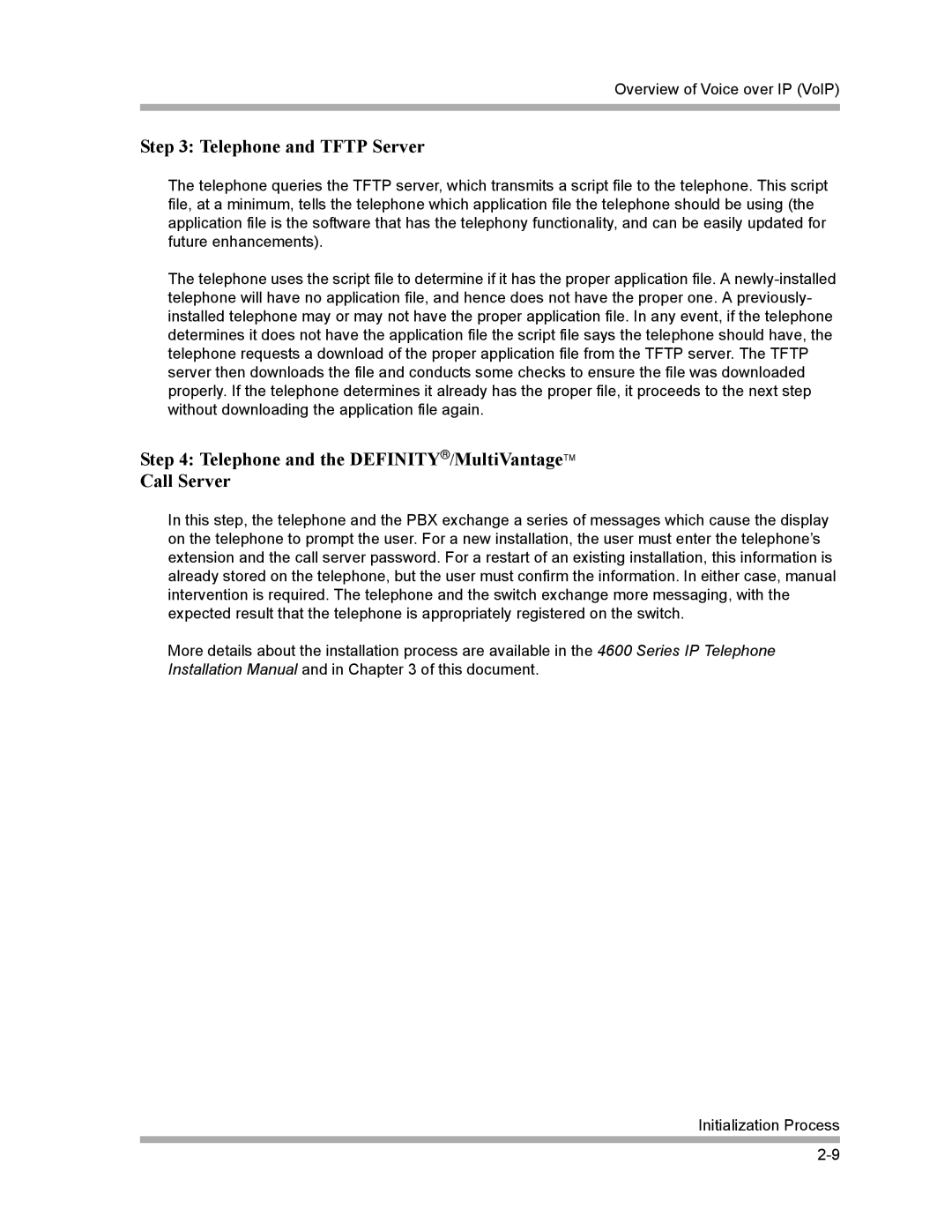
Overview of Voice over IP (VoIP)
Step 3: Telephone and TFTP Server
The telephone queries the TFTP server, which transmits a script file to the telephone. This script file, at a minimum, tells the telephone which application file the telephone should be using (the application file is the software that has the telephony functionality, and can be easily updated for future enhancements).
The telephone uses the script file to determine if it has the proper application file. A
Step 4: Telephone and the DEFINITY® /MultiVantageTM
Call Server
In this step, the telephone and the PBX exchange a series of messages which cause the display on the telephone to prompt the user. For a new installation, the user must enter the telephone’s extension and the call server password. For a restart of an existing installation, this information is already stored on the telephone, but the user must confirm the information. In either case, manual intervention is required. The telephone and the switch exchange more messaging, with the expected result that the telephone is appropriately registered on the switch.
More details about the installation process are available in the 4600 Series IP Telephone Installation Manual and in Chapter 3 of this document.
Initialization Process
